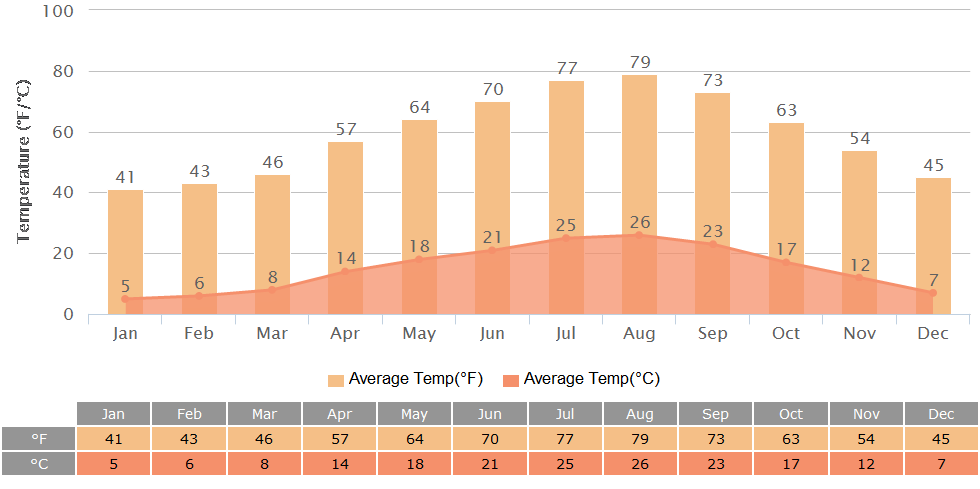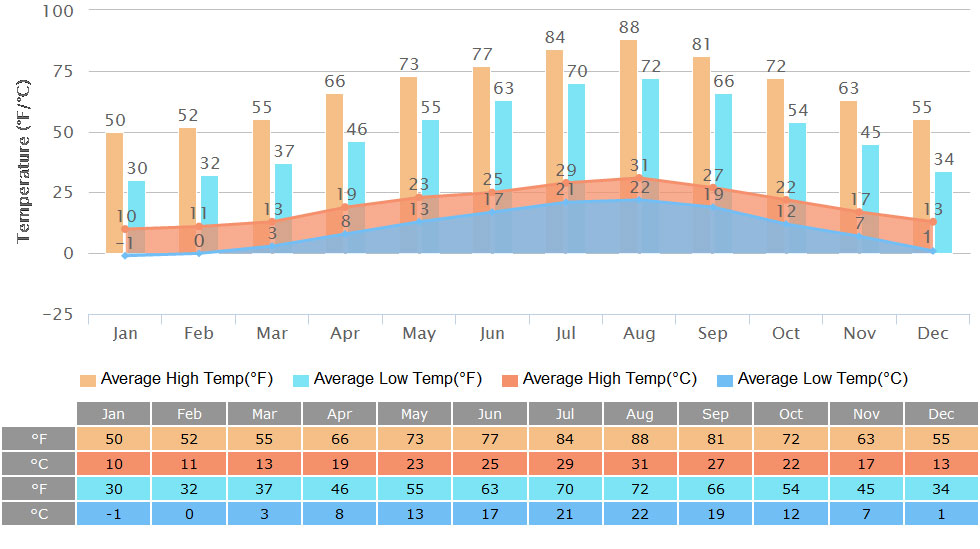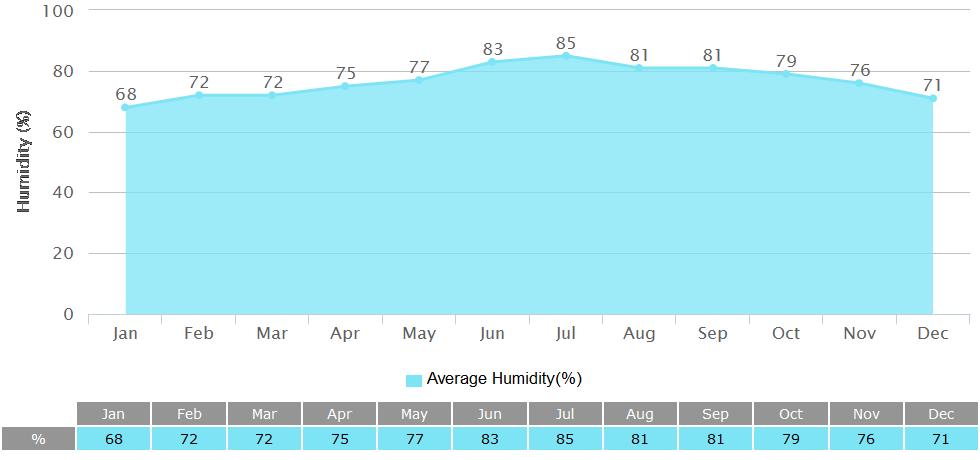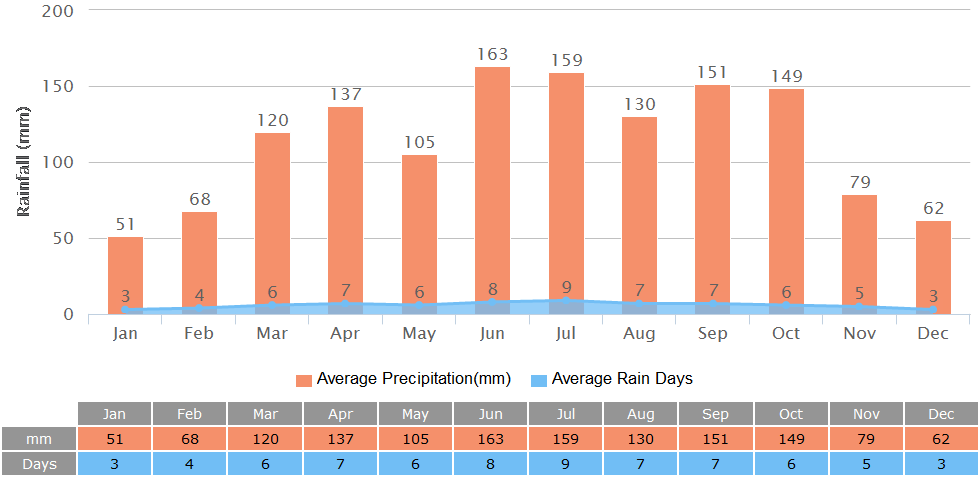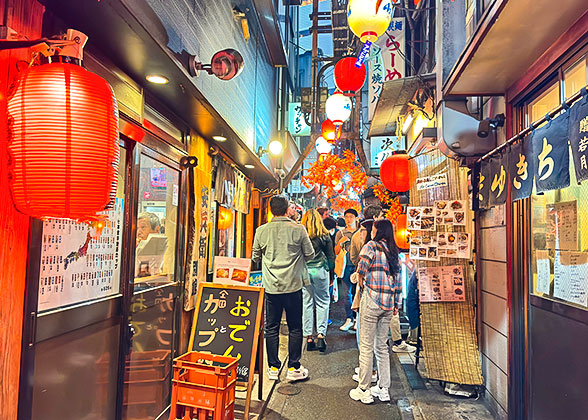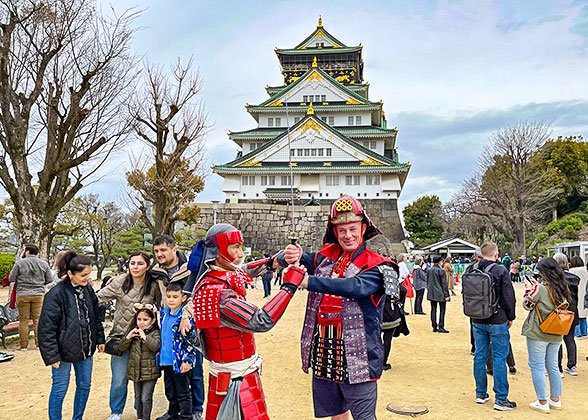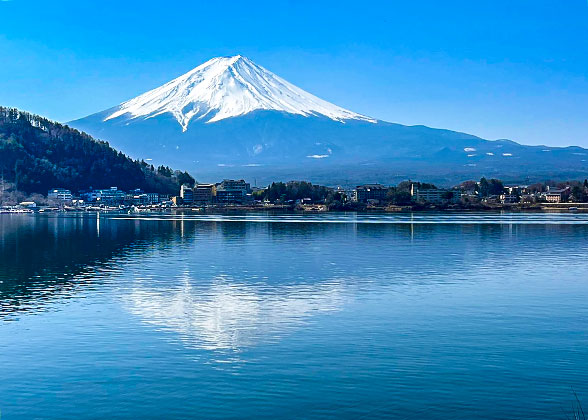- Attractions
- Weather
- Travel Tips
Hakone Weather
Hakone in temperate monsoon climate zone is characterized by cold winter from December to next February, hot and rainy summer from June to August, and mild spring from March to May and autumn from September to November. Its weather in different areas varies because of the altitude difference. The climate in low-altitude area - Hakone Yumoto is similar to that in Tokyo, generally about 3 – 4 degree Celsius (37.4 - 39.2degrees Fahrenheit) higher than the high-altitude areas. In addition, there is a huge temperature difference between day and night. So, it is suggested that you always take an extra coat even in summer, to keep warm.
Hottest Month: August, the average high temperature is 31.2℃ (88.2℉)
Coldest Month: January, the average low temperature is -0.1℃ (31.8℉)
Rainiest Month: June, the average rainfall is 163mm and the average rainy days are 8 days
Sunniest Month: December and January, with 17.5 and 17.9 sunny days on average respectively
Snowiest Month: February, 2.7 snowy days and 31mm snowfall on average.
Late March - May and late September - November are best time to travel to Hakone. First, the climate is very comfortable during these periods. The temperature is neither too chilly nor too hot and the rainy days are moderate. Second, the scenery is very charming. Going to Hakone during the 2 periods, you can see cherry blossoms from mid-March to April, red leaves from late October to November, and Sengokuhara’s susuki grass from September to November.
Spring: March - May
Average Temperature: 8.8 - 18.2℃ (47.8 - 64.8℉)Average Rainfall and Rainy Days: 359mm; 19 days
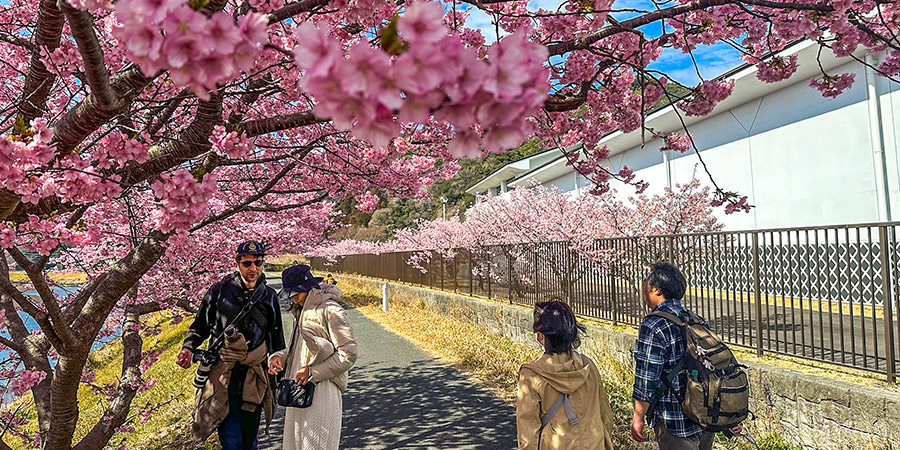
Hakone Sakura in Spring
|
The early March is still cold and snowfall is possible, so thick winter clothes are needed. With the temperature rising day by day, it gets warmer and warmer and the weather is generally mild. But daily temperature difference is big. As for rainfall, there are about 6 - 7 rainy days on average each month.
What to Wear
In early March, pack thermal underwear, sweater, down coat, thick winter pants, and boots. In the warmer later March - early May you need: a hoody and a trench coat for the upper; spring jeans and spring casual shoes for the lower. In late May, for the upper, a single hoody is enough.Top Things to Do
1. Appreciate Sakura: Hakone’s sakura season lasts from mid-March to April, and you can watch various breeds of sakura in Gora Park, Miyagino, and so on.2. See Azalea flowers in Odakyu Hotel de Yama: From May, Azalea flowers of different colors in Odakyu Hotel de Yama begin to bloom in its garden.
3. Lake Ashi Cruise: Taking Pirate Ship in spring, you can appreciate Lake Ashi with the vibrant landscape along the Lake. Also, it is not that cold to stand on the deck.
Summer: June - August
Average Temperature Range: 21.8 - 26.6℃ (71.2 - 79.9℉)Average Rainfall and Rainy Days: 452mm; 25 days
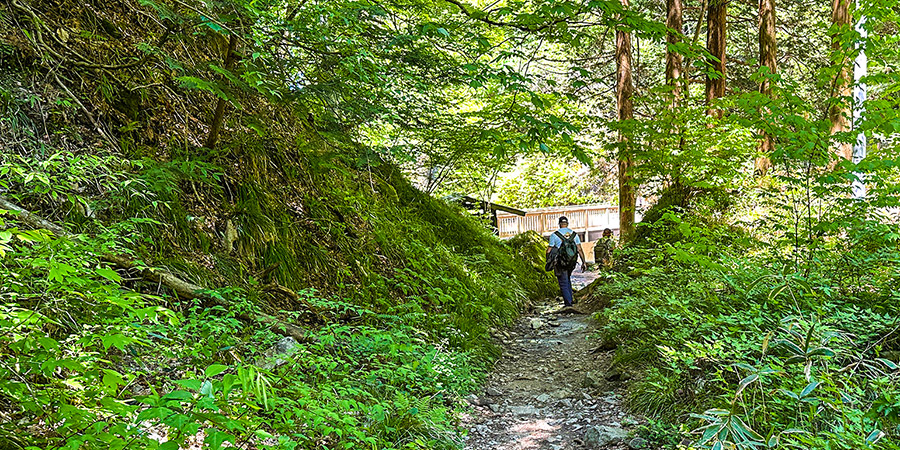
Hakone's Forests in Summer
|
From June to August, it becomes hotter and hotter. Early June - mid July is Hakone’s rainy season and frequent rainfall is very common then. Taking rain gear with yourself is needed. In addition, as typhoon occurs occasionally in summer, please check weather forest in advance.
What to Wear
For the upper, wear loose T-shirt and a thin summer coat, which protects your skin from the strong UV index. For the lower, shorts/ skirt and sandals/ summer casual shoes are good. If you visit high-altitude areas, change shorts/ skirt to thin long pants as temperature is a little lower there.Top Things to Do
1. Watch fireworks shows in late July - early August: At night of those days, thousands of fireworks would light the sky above Lake Ashi.2. Because of hot weather and rainy days, it is suggested to arrange more indoor attractions like Open Air Museum and Okada Museum of Art into your itinerary.
3. Hakone Shrine: The Shrine is built in the mountains and the dense forests offer some coolness. Visiting it in the hot summer may help you calm down.
Autumn: September - November
Average Temperature Range: 23.2 - 12.4℃ (73.8 - 54.3℉)Average Rainfall and Rainy Days: 379mm; 18 days
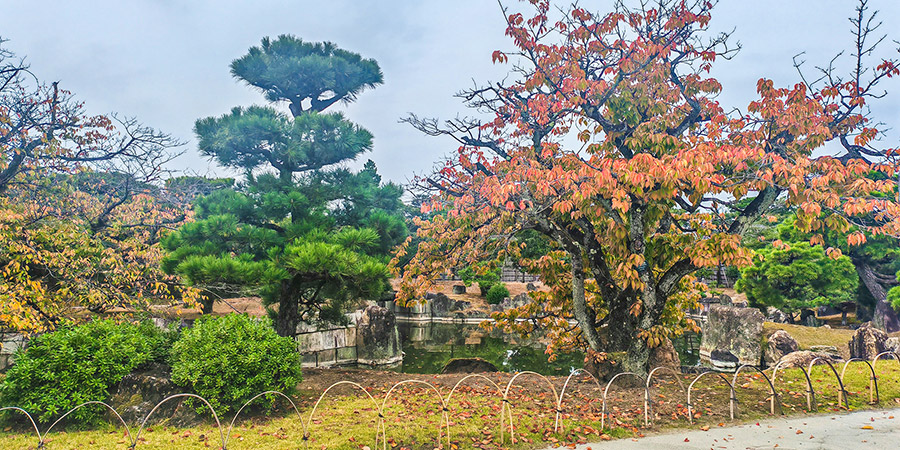
Hakone in Autumn
|
Although it is still a little hot during the daytime in early September, the temperature shows a falling trend. It turns cool in late September and a little cold in November. Fortunately, the rainy days are moderate, but typhoon is possible in September and October.
What to Wear
In September, you can still wear summer clothes, but take an extra autumn coat as it is a little cold in the early morning and at night. From October to early November, shirt/ hoody, a trench coat, and spring jeans are good matches. In mid and late November, thermal underwear, sweater, down coat, and winter pants are needed to keep warm. For shoes, autumn sneakers and hiking shoes are good choices.Things to Do
1. Take Hakone Ropeway to appreciate red leaves: Hakone’s maple leaves would first turn red around Oakudani Valley in late October. By Hakone Ropeway, you can look down the leaves below your feet.2. Watch Suzuki grasslands: The golden Suzuki grassland in Sengokuhara is a good place to take a stroll.
3. Explore Hakone Old Road: In the cool autumn, outdoor activities are very suitable, and trekking Hakone Old Road is recommended. Many traditional shrines and teahouses are built along the trekking trail.
Winter: December - February
Average Temperature Range: 5.4 - 7.6℃ (41.7 - 45.7℉)Average Rainfall and Rainy Days: 193mm; 10 days
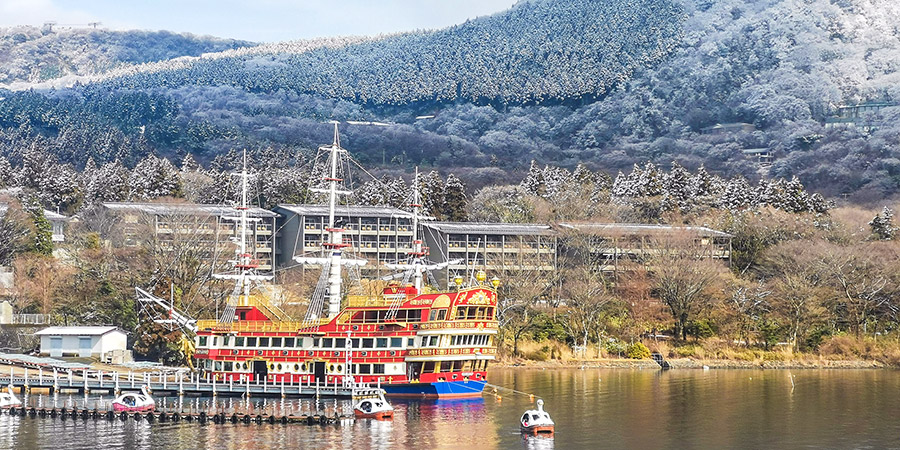
Hakone in Winter
|
In winter from December to January, it turns colder and colder. Later, the temperature rises gradually in February, but it’s still chilly, especially after it snows. However, it’s the best season to see Mount Fuji as the visibility is high and the mountain is snowcapped.
What to Wear
Wear thermal underwear, sweater, and down jacket as the upper. For the lower, thermal underwear, winter thick pants, boots, or winter hiking shoes are good.Things to Do
1. Soak Onsen: Soaking in hot springs makes your body warm quickly in the cold winter.2. Explore Owakudani Valley: As it is often sunny in winter, you can observe the volcanic activities clearly, like the yellow sulfur gas rising above.
3. Watch sculptures in Open Air Museum: Since it is too cold in January, then visiting museums is a good choice. Open Air Museum owns authentic works of Picasso.
2. Except in summer, it gets dark early in Hakone. As it is dangerous in the mountains when it is dark, it’s not advisable to finish your trip too late.

